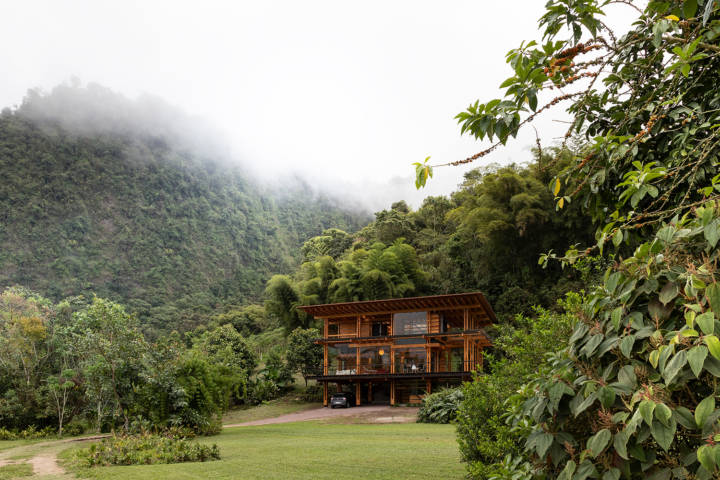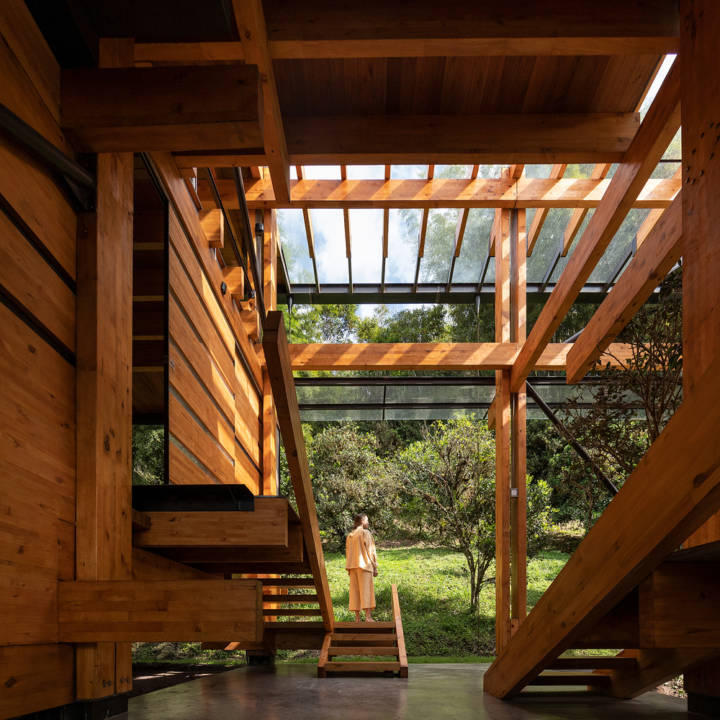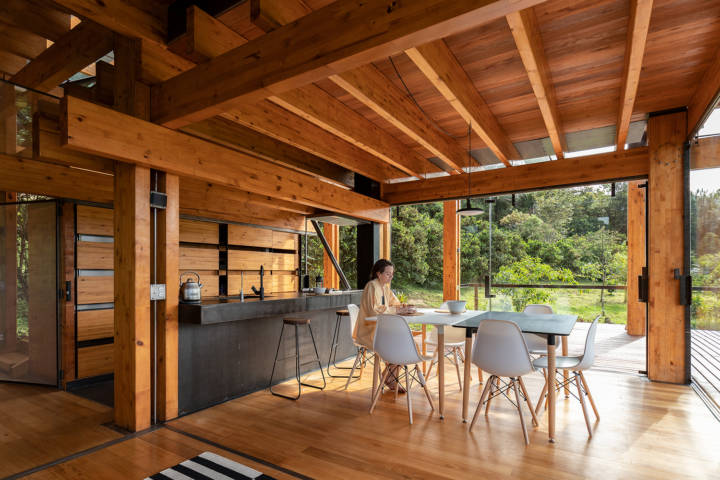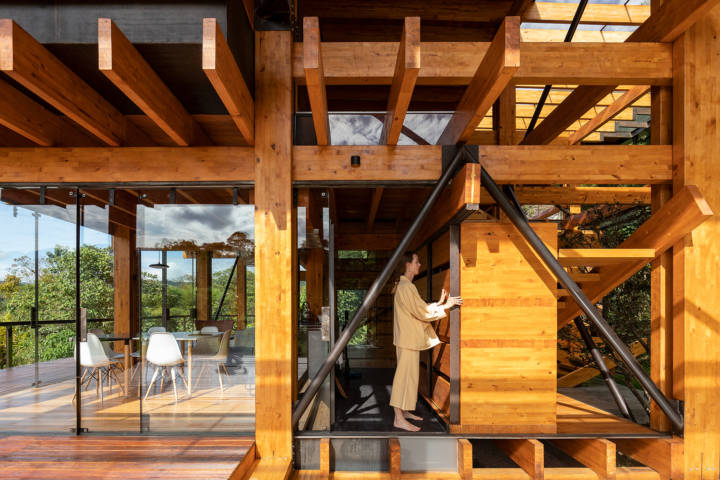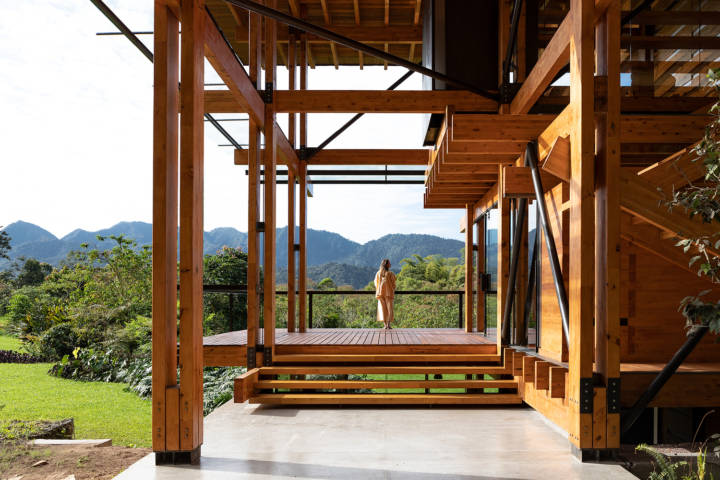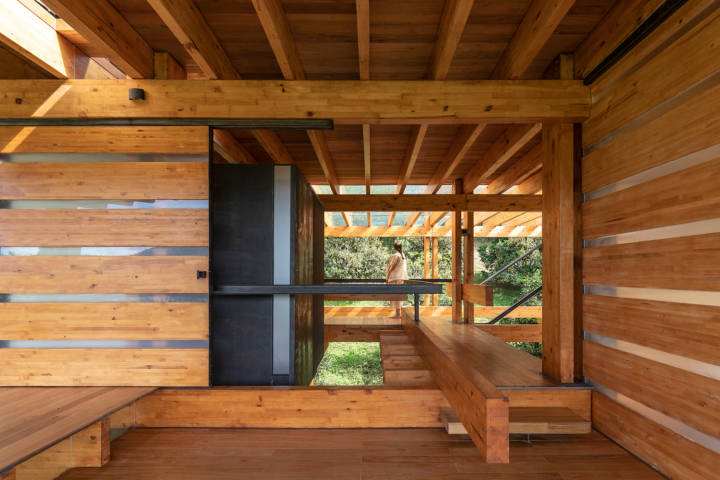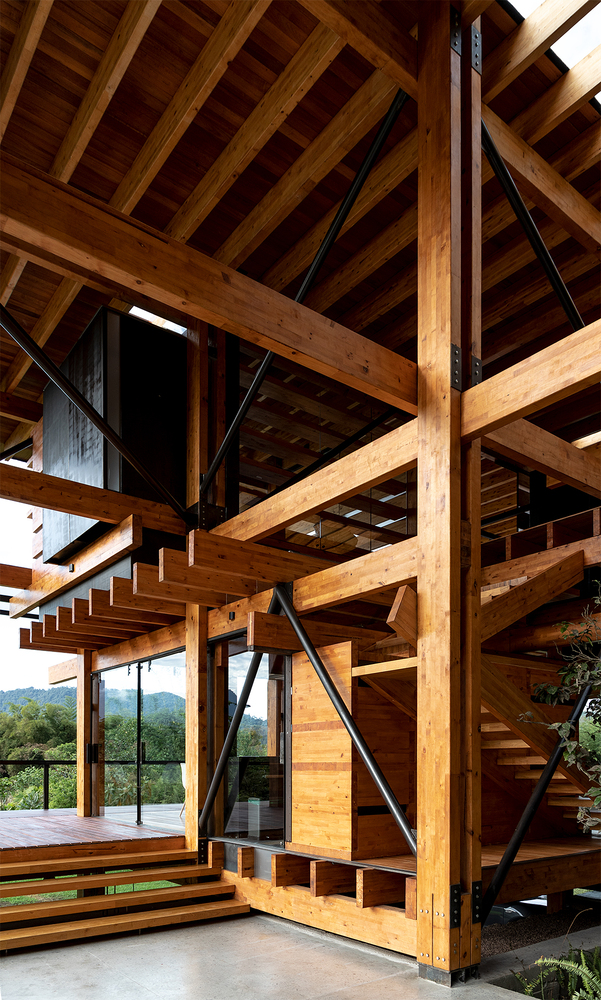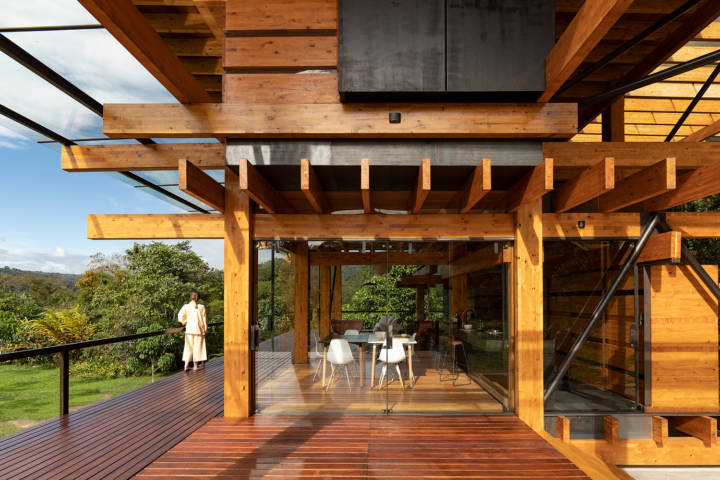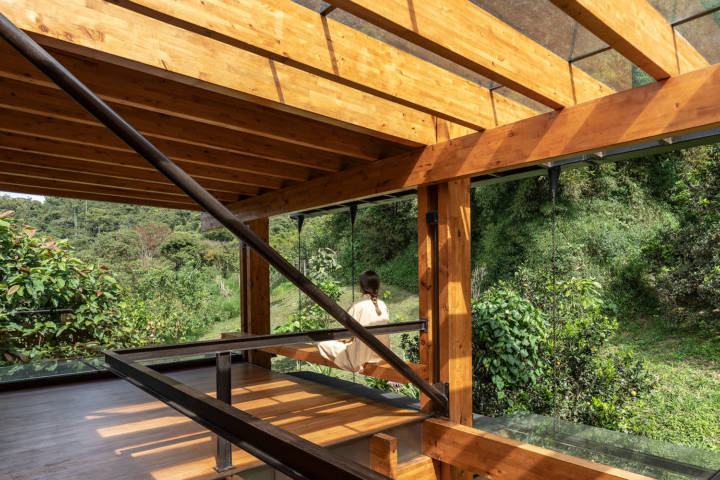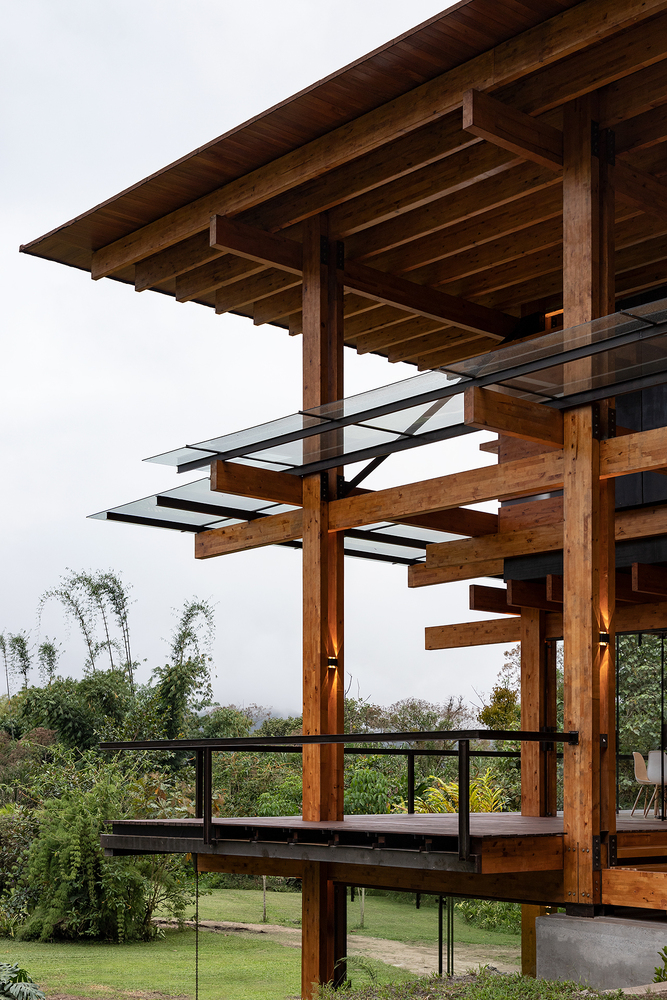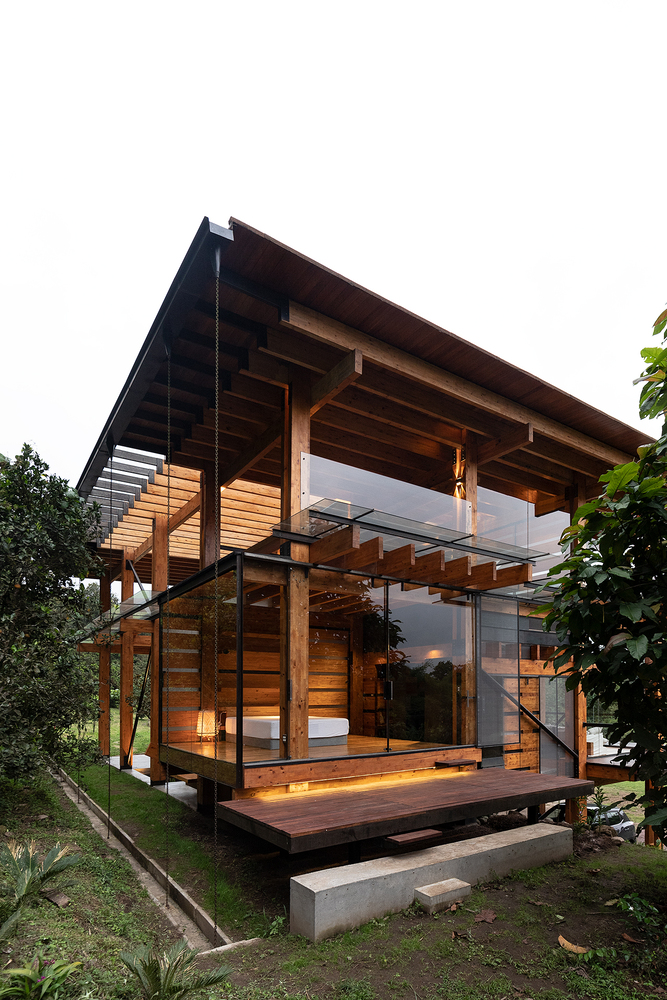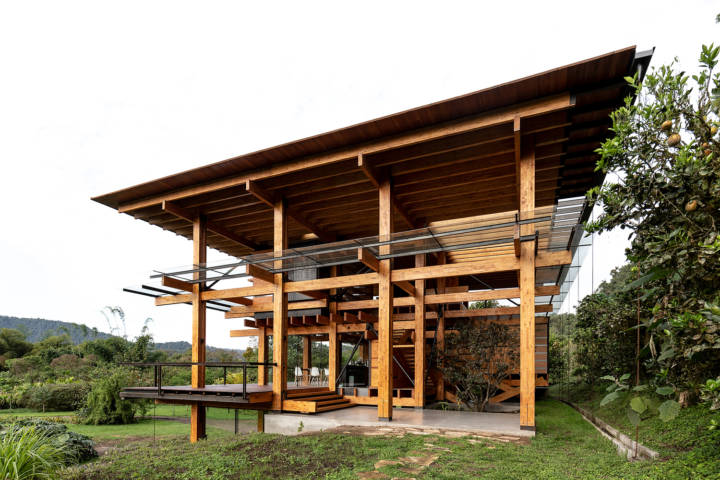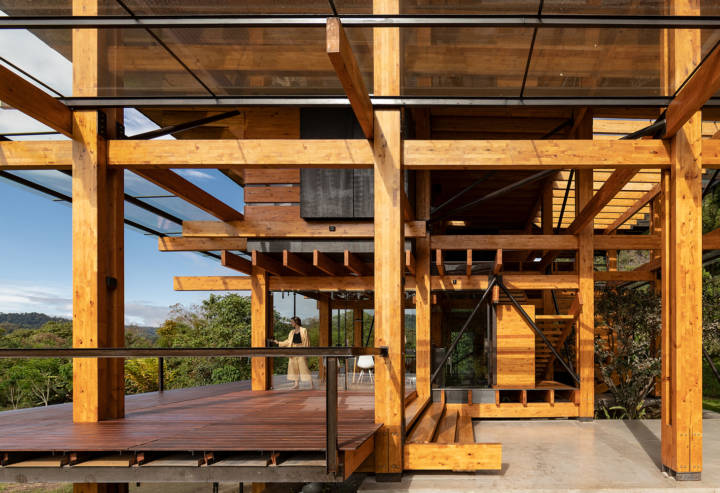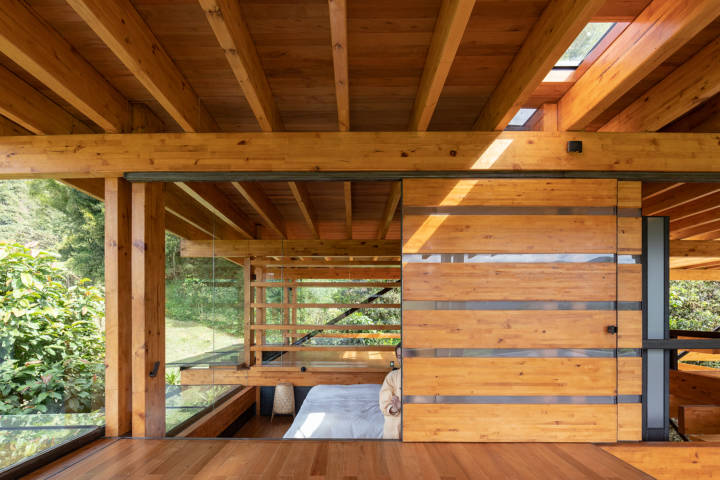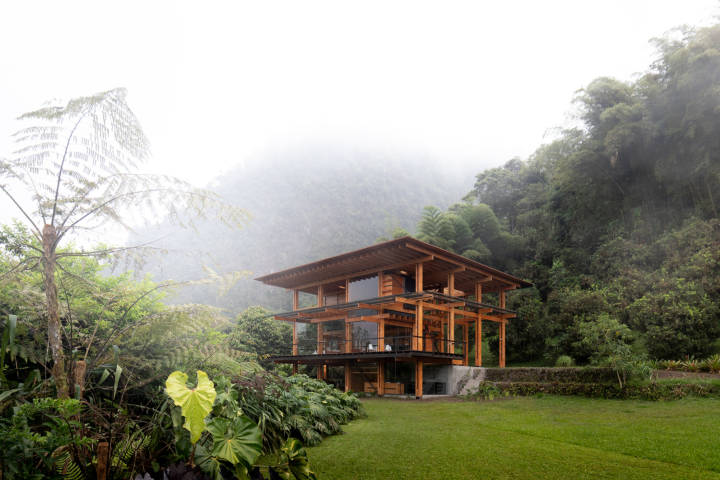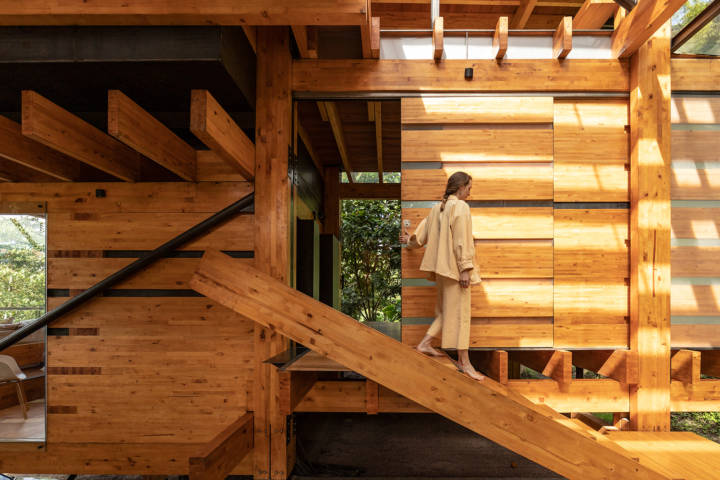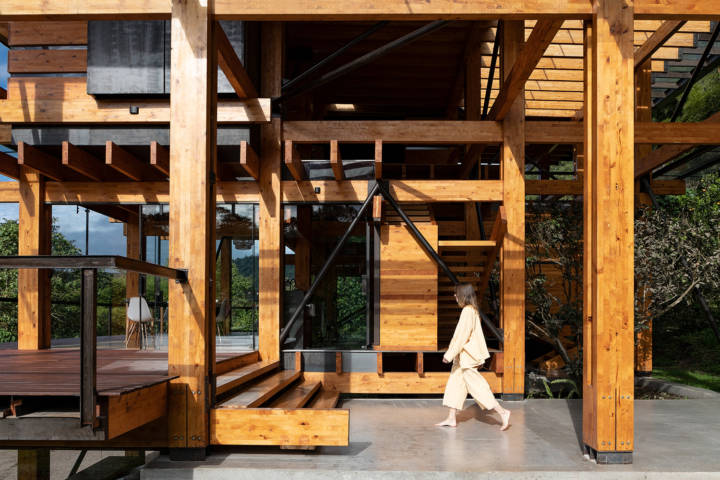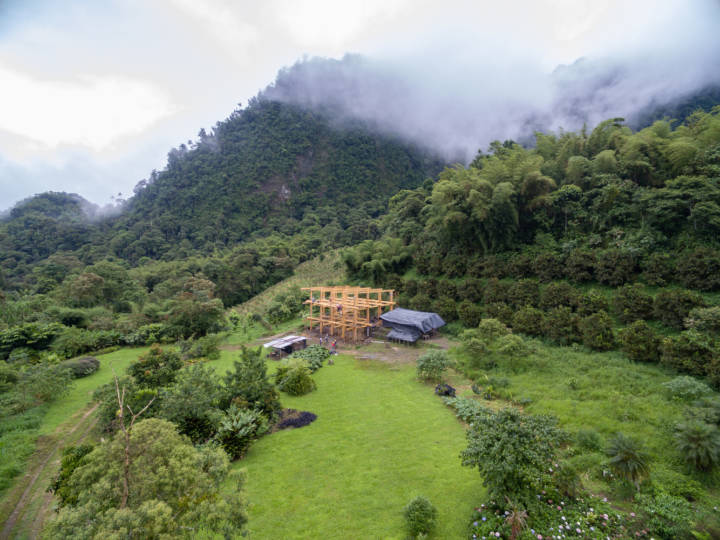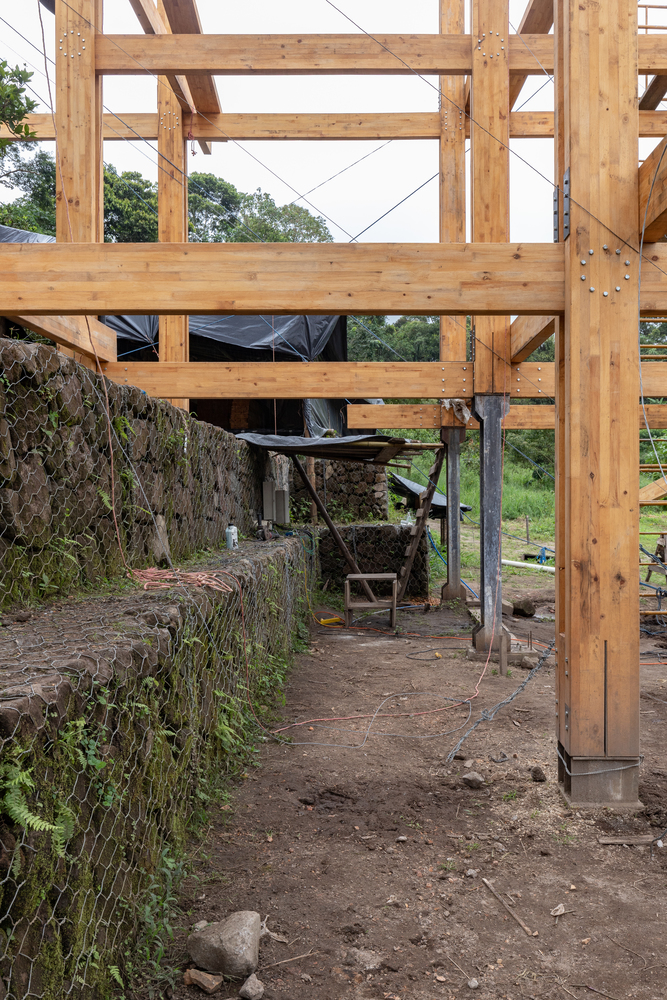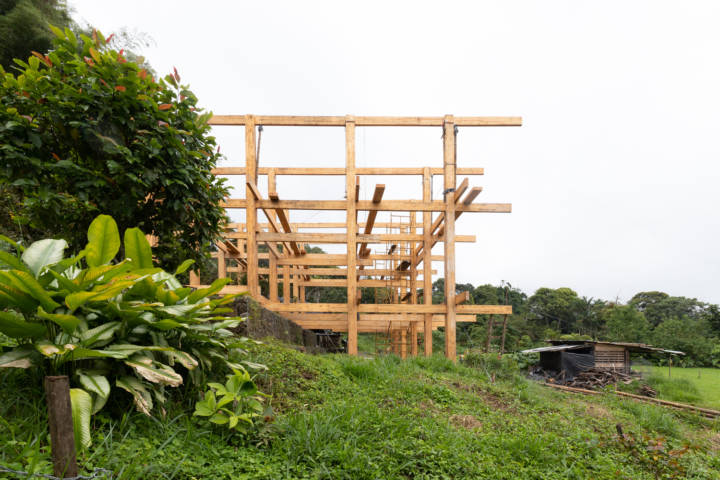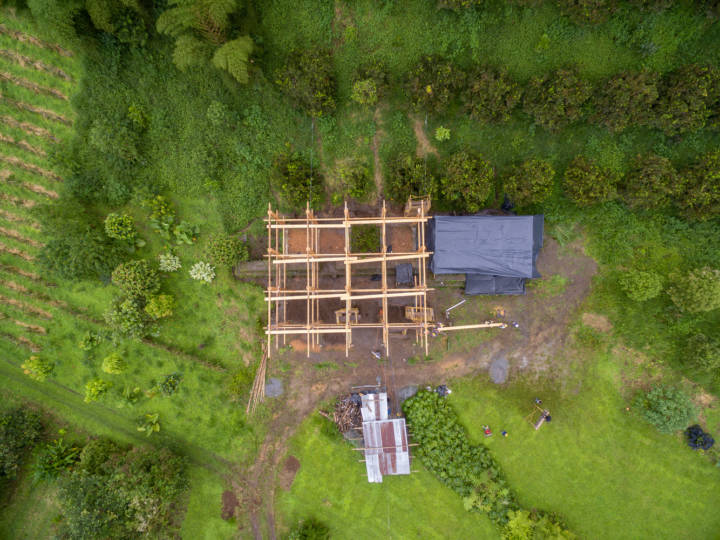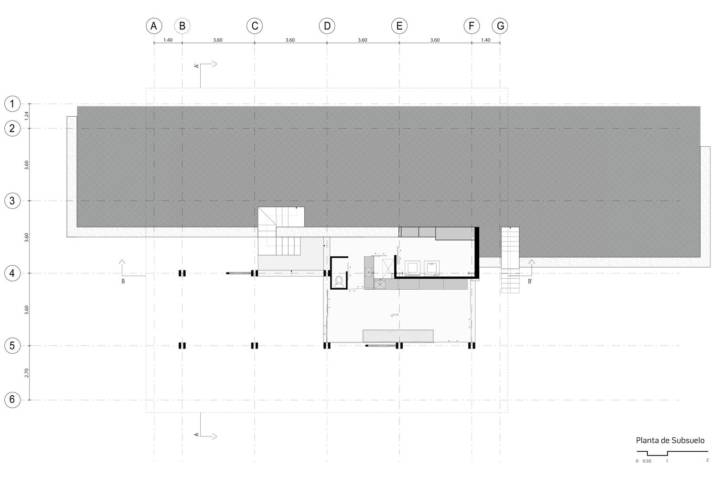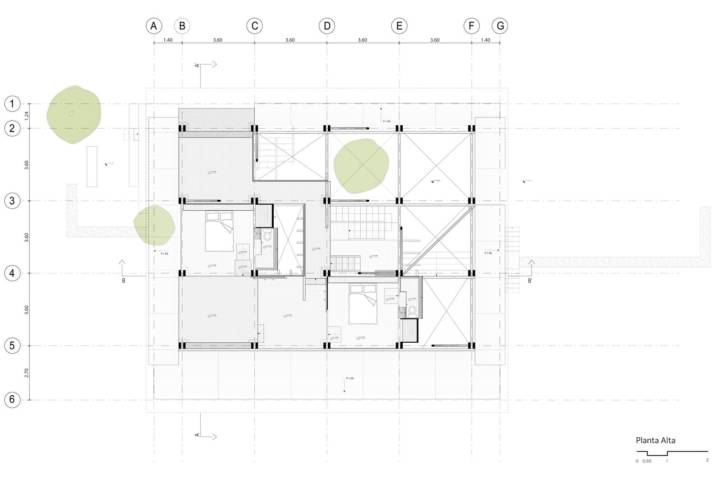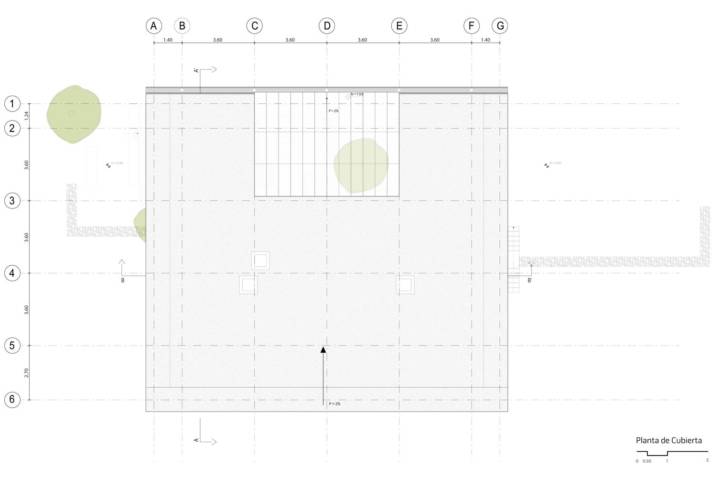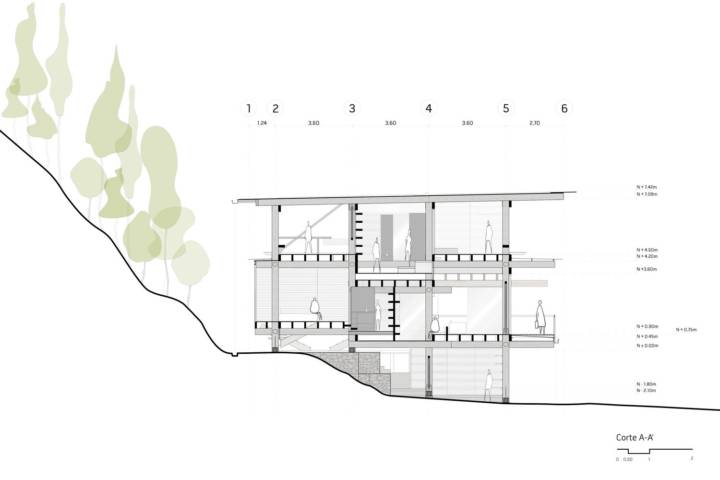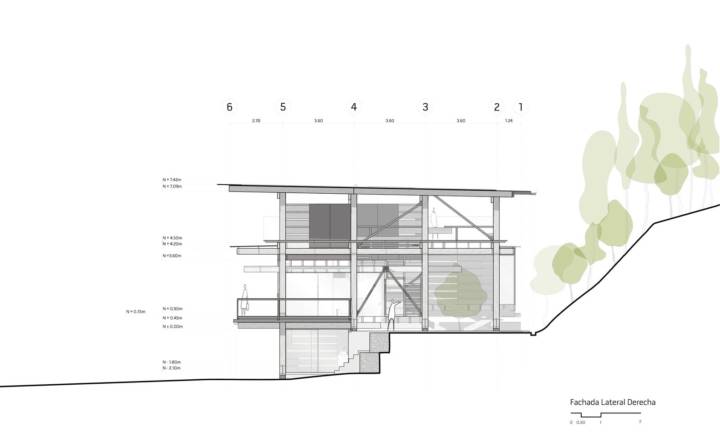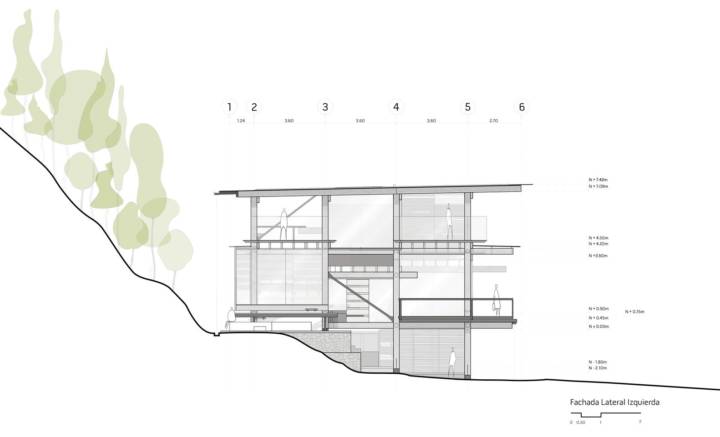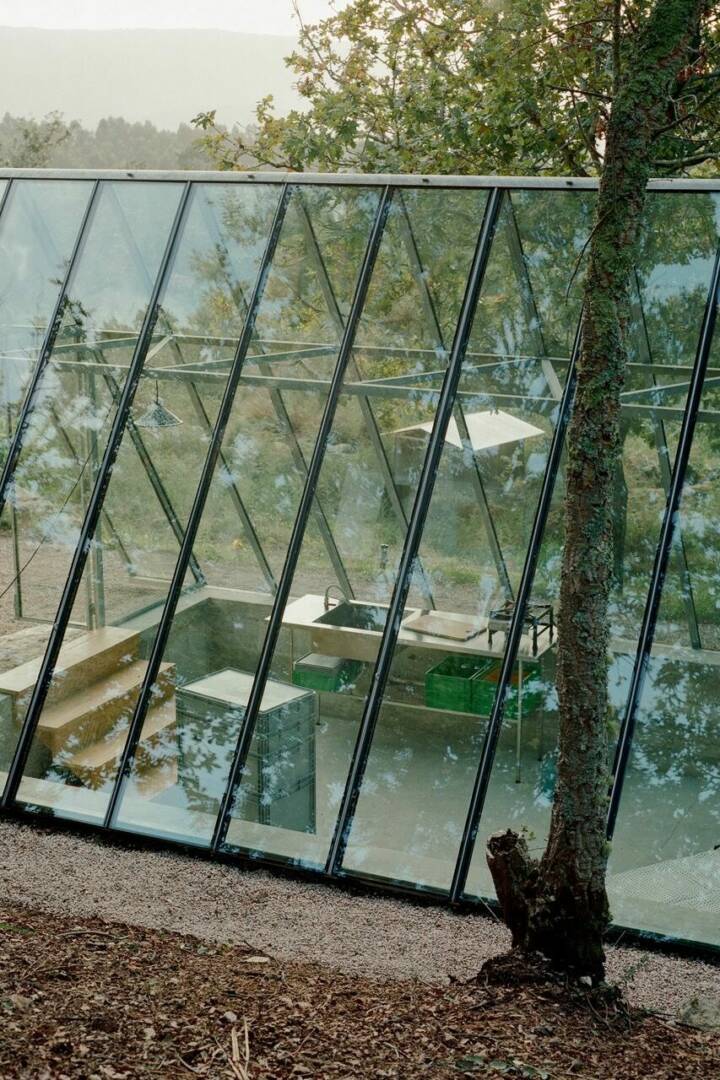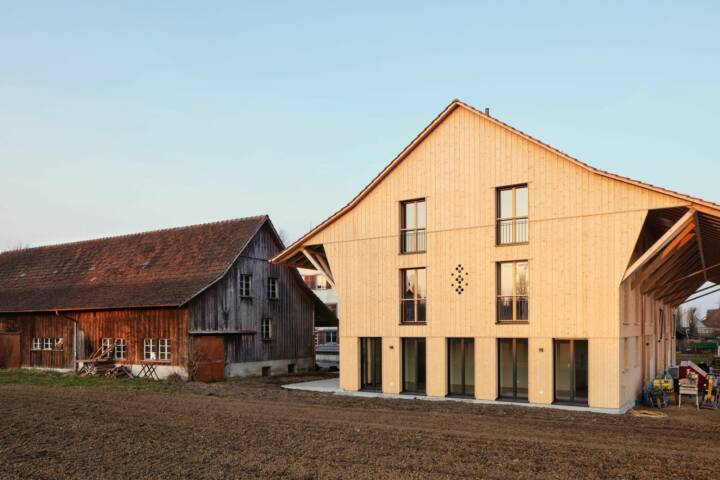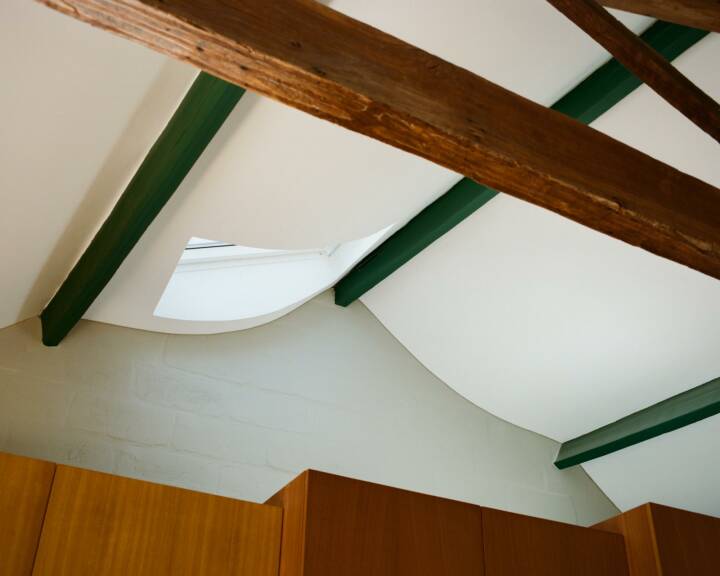Architects: José María Sáez Taller general Photography: JAG studio Construction Period: 2020 Location: , Ecuador
The commission was to generate a weekend home that establishes an intimate relationship with nature, but maintains a good connection with the outside, a house that combines these two complexities and proposes an alternative to everyday life. The location is: Mindo, a town located in the humid forest of the Ecuadorian Andean Chocó, this area is characterized by high rainfall, warm weather and fairly high humidity.
The house is conceived as a biodiverse container that seeks to generate a relationship between the natural and the artificial, understanding natural as the flora and fauna originating from Mindo and artificial as that which focuses on solving the daily needs of users ( technology, connectivity, leisure, comfort). In this way, it is sought that the house fosters a diverse habitat.
Read MoreCloseA strategic location on the lot is chosen, which allows taking advantage of visuals and generating a harmonious relationship between the height of the house and the surrounding elevations. In addition, different scales of the inside-outside relationship are achieved with the location, which will allow the program to be distributed according to the spatial needs established for each space with the outside.
It was decided to work with laminated pine wood, seeking to promote the use of this emerging construction system in Ecuador. Madebú -the supplier of the material- handled three optimal dimensions (in relation to waste) in terms of the width of the piece (11, 3.5 and 7.5 centimeters); In relation to the height, we could work with multiples of 3 centimeters and for the length, the limit was given by the transport and handling of the pieces. We decided to use the 3 width dimensions available (for the main structure, secondary structure and accessories respectively) always with a height of 30 centimeters and a maximum length of 9.5 meters (because the largest truck that could access the lot had the capacity to load a maximum of one piece of that length). Another condition for the size of the pieces was the weight, due to the complicated accessibility to the site, the assembly would be manual, for this the pieces had to be able to be transported by a team of 6 people, the weight of the longest piece is 145 kilograms approximately.
The maximum length also defined the height of the house, the columns had to be a continuous piece, so the maximum height is equal to the maximum length; condition that does not limit the beams because these elements could be composite.
At the programmatic level, a house that can change depending on its use was sought, a house that can adequately serve the family but that, in turn, can accommodate many more users and diverse activities.
Taking advantage of the particular climate of Mindo, it is established that the comfort conditions for the family are not necessarily the same as for the visitors, they will occupy the house for long periods of time, so capsules that can be isolated from the context and maintain standards are considered. of high comfort, but for visits, understanding them as sporadic, they can occupy the space in a more informal way. It is thought of a house that can accommodate many visitors but that does not have guest rooms, working with many intermediate spaces, attached to the capsules for family use, that can expand their occupancy capacity and be enabled according to need.
These intermediate spaces also serve as circulation, take advantage of privileged views and allow infinite ways of occupying the house. In addition, they allow the user to model the scale of each capsule according to their needs, any room in the house can grow and use these intermediate spaces when required.
Text provided by the architect.
